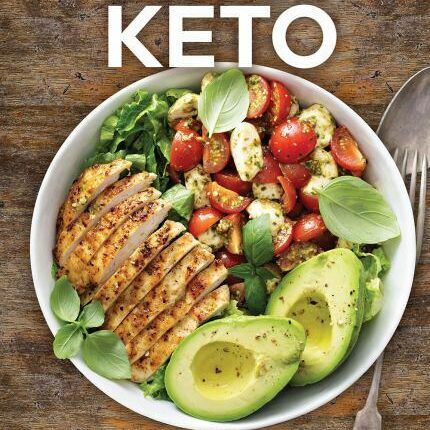Starting a keto diet can be a transformative journey toward improved health, weight management, and enhanced energy levels. However, embarking on this path requires careful planning, a clear understanding of nutritional principles, and a commitment to making sustainable lifestyle changes. This comprehensive guide will walk you through everything you need to know to start a keto diet successfully.

Understanding the Keto Diet
The ketogenic (keto) diet is a high-fat, moderate-protein, and very low-carbohydrate eating plan. The primary goal is to shift your body’s metabolism from relying on carbohydrates for energy to burning fat. This metabolic state is known as ketosis, wherein the liver produces ketones from fat, which become the primary energy source for the body and brain.
Benefits of the Keto Diet
- Weight Loss: The keto diet can lead to significant weight loss, primarily through the reduction of stored fat.
- Improved Mental Clarity and Focus: Many people report enhanced cognitive function and mental clarity while in ketosis.
- Better Blood Sugar Control: The keto diet can stabilize blood sugar levels and improve insulin sensitivity, making it beneficial for those with type 2 diabetes.
- Increased Energy: By using fat as a steady energy source, many individuals experience more consistent and sustained energy levels throughout the day.
- Appetite Control: High-fat and protein-rich meals can help control hunger and reduce overall calorie intake.
Getting Started: Preparation and Planning
1. Educate Yourself
Before diving into the keto diet, it’s essential to educate yourself about its principles, potential benefits, and risks. Read books, articles, and research studies, and consider consulting with a healthcare professional, especially if you have any underlying medical conditions.
2. Clean Out Your Pantry
To minimize temptation, remove high-carbohydrate foods from your kitchen. Donate or discard items like bread, pasta, rice, sugary snacks, and processed foods.
3. Stock Up on Keto-Friendly Foods
Ensure your pantry and fridge are filled with keto-approved foods. Here are some staples:
- Fats and Oils: Coconut oil, olive oil, avocado oil, butter, ghee.
- Protein: Meat, poultry, fish, eggs, and tofu.
- Dairy: Cheese, heavy cream, and full-fat yogurt.
- Low-Carb Vegetables: Leafy greens, broccoli, cauliflower, zucchini, and bell peppers.
- Nuts and Seeds: Almonds, walnuts, chia seeds, flaxseeds.
- Other Essentials: Avocados, olives, and low-carb sweeteners (like stevia or erythritol).
4. Plan Your Meals
Create a meal plan for the first week to help you stay on track. Include a variety of keto-friendly recipes to keep your diet enjoyable and nutritious. Websites, cookbooks, and mobile apps can offer valuable meal planning tools and recipe ideas.
Implementing the Keto Diet
1. Start Slowly
Transitioning to a keto diet can be challenging. Begin by gradually reducing your carbohydrate intake over a few days to a week. This approach can help minimize the initial discomfort often referred to as the “keto flu,” which includes symptoms like headaches, fatigue, and irritability.
2. Monitor Your Macronutrient Intake
The standard macronutrient ratio for a keto diet is approximately 70-75% fat, 20-25% protein, and 5-10% carbohydrates. Use a food diary or a nutrition tracking app to ensure you’re staying within these guidelines.
3. Stay Hydrated and Replenish Electrolytes
Dehydration and electrolyte imbalances can occur during the initial stages of the keto diet. Drink plenty of water and consider supplementing with electrolytes like sodium, potassium, and magnesium to maintain balance.
4. Be Mindful of Hidden Carbohydrates
Carbohydrates can hide in unexpected places. Read labels carefully and be cautious of condiments, sauces, and processed foods that may contain added sugars or starches.
5. Experiment with Intermittent Fasting
Intermittent fasting (IF) can complement the keto diet by enhancing fat burning and improving metabolic health. Common IF methods include the 16/8 method (fasting for 16 hours and eating during an 8-hour window) and the 5:2 method (eating normally for five days and restricting calories for two non-consecutive days).
Overcoming Challenges
1. Dealing with the Keto Flu
The keto flu is a temporary condition that some people experience when transitioning to ketosis. To alleviate symptoms, ensure you’re well-hydrated, consume enough electrolytes, and get plenty of rest.
2. Social Situations and Dining Out
Navigating social events and restaurant menus can be challenging. Plan ahead by checking menus online, choosing keto-friendly dishes, and informing your host or dining companions about your dietary preferences.
3. Sticking to the Diet Long-Term
Sustainability is key to long-term success on the keto diet. Keep your meals varied and enjoyable, seek support from keto communities, and remind yourself of your health goals and the benefits you’ve experienced.
Monitoring Progress and Adjusting
1. Track Your Ketone Levels
Measuring ketone levels can help you gauge whether you’re in ketosis. This can be done using blood, breath, or urine tests. Blood ketone meters are the most accurate method.
2. Monitor Your Health
Regularly track your weight, body measurements, and other health markers. This can help you assess your progress and make any necessary adjustments to your diet or exercise routine.
3. Adjust Macronutrient Ratios if Needed
Everyone’s body responds differently to the keto diet. If you’re not seeing the desired results or if you’re experiencing negative symptoms, consider tweaking your macronutrient ratios. For example, some individuals may benefit from slightly increasing their protein intake or adjusting their fat sources.
Conclusion
Starting a keto diet can be a rewarding journey towards better health and well-being. By understanding the principles, preparing adequately, and making informed choices, you can successfully transition to and maintain a ketogenic lifestyle. Remember to listen to your body, stay hydrated, and seek support when needed. With dedication and patience, the keto diet can help you achieve your health and weight management goals.
